Caryn’s Thoughts
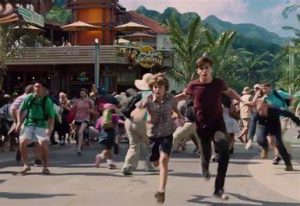 One of the most common practices of the school year is the routine fire drill. These days, children are well aware of what is going on, and often look forward to being able to vacate the classroom…even if only for a few minutes. The routine fire drill is designed to insure that the students leave the premises without panic, whether there is an actual fire or not. These drills were not always routine, the ensuing panic could be deadly.
One of the most common practices of the school year is the routine fire drill. These days, children are well aware of what is going on, and often look forward to being able to vacate the classroom…even if only for a few minutes. The routine fire drill is designed to insure that the students leave the premises without panic, whether there is an actual fire or not. These drills were not always routine, the ensuing panic could be deadly.
In 1851, in Greenwich Avenue school, located at 36 to 40 Greenwich Avenue. When the fire alarm sounded, the children panicked. They had not been trained to calmly exit the building, and in the ensuing panic, 40 children were killed. There was no fire, and the fire alarm had been set off by accident, but the children had no idea what to do, and so went running in fear. The deaths were horrible trample deaths. More children were injured.
The tragedy of 1851 was almost repeated in 1882, when a fire drill went off at Grammar School Number 41, at the same sight of the 1851 panic. The situation may have occurred on a different date, but the result was the same…panic. When the fire alarm sounded, someone cried, Fire!!” After that, chaos took over, and the same disaster could have happened, had not the teachers, janitor, firemen, and police stayed calm. Somehow they managed to calm the children down. The adults behaved with such rare intelligence and energy that the panic was stayed and nearly all the children reached the avenue unharmed. Grammar School Number 41 was an all-girl school. At the time of the panic 610 students were in the 11 classrooms of the primary school on the first floor, under Miss Susanna Whitney, and 669 were in the 19 classrooms of the grammar school on the second and third floors, under Miss Lizzie Cavannah. There was a female teacher in each of the classrooms.
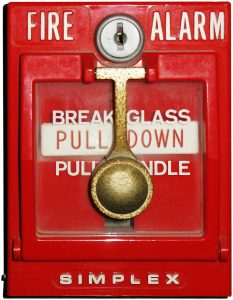
Somehow, all of the 1200+ students got out alive. When the school reopened, an order was received from City Superintendent John Jasper to perfect the scholars in the fire drill. “Each scholar has a numbered peg on which to hang her clothes, and the fire drill consisted in sounding an alarm, when the scholars are required to get their clothes and collect their books and return to their seats. Meanwhile preparations were made for the teachers to be on the landings of the seven staircases, four of which are fire-proof, which lead to the four exits on Greenwich-avenue. At a signal the children were to rise and go out calmly. Going down the stairs one only was permitted to be on each side of the staircase, where there is a handrail, and the exit to the avenue was required to be in an orderly manner.”
Previously, the fire drill alarm was sounded on the tinkling class bells from bell handles in the assembly room of the primary and grammar departments. This was deemed unsafe, as it necessitated the pulling of as many handles as there were classrooms. It had to change. To make a simultaneous alarm, three large fire-gongs were installed, so that the whole school could be notified by pulling at three handles. It does not appear that the students knew of the new arrangement. Some of them had heard of the gongs, but they had not heard them strike, and they did not receive instructions about them, which would have helped immensely. It was agreed between Miss Whitney and Miss Cavannah that a fire drill should be held on a particular day. They believed that the 140 new and untrained students in the primary school and 90 new girls in the grammar school would follow the example of the trained students. At 2:40pm, Miss Cavannah had the alarm struck on the second and third floors. Six strokes were sounded on each gong. The deep, loud noise, resembling the clang of a fire engine gong, startled even the trained students, and as they whispered to each other “fire drill” in going for their clothes the untrained students misunderstood them, and believed that the school was on fire, and that the noise of the gongs was the bells of the engines summoned to the school. There was a panic immediately, and 50 fearful girls ran screaming and bareheaded from the grammar school to the street before the teachers could spring to the doorways, bar exit, and command order. The screaming and confusion overheard alarmed 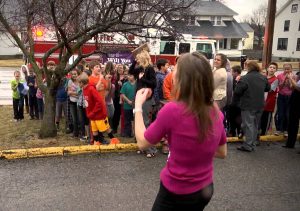 the students and teachers in the primary school, but the doors were guarded before more than 25 or 30 children escaped. For several minutes the teachers had hard work to keep back the imprisoned children. The trained students were as alarmed as the new ones, and some of them wept and begged piteously as they, despite the assurances of their teachers, who all behaved bravely except for one instance, that of a new instructress, who for a time did not understand the situation. Some of the children even ran home and told their parents and neighbors that the school was on fire and the children were burning. It almost created a panic of the whole town. It quickly became clear that prior to the first drill, the students needed instruction on procedure.
the students and teachers in the primary school, but the doors were guarded before more than 25 or 30 children escaped. For several minutes the teachers had hard work to keep back the imprisoned children. The trained students were as alarmed as the new ones, and some of them wept and begged piteously as they, despite the assurances of their teachers, who all behaved bravely except for one instance, that of a new instructress, who for a time did not understand the situation. Some of the children even ran home and told their parents and neighbors that the school was on fire and the children were burning. It almost created a panic of the whole town. It quickly became clear that prior to the first drill, the students needed instruction on procedure.
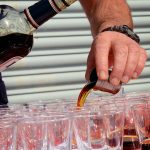 There are some traditions or practices that, upon further consideration, are not necessarily good traditions or practices. Between 1850 and as recently as 1970, sailors on Royal Navy Ships were given a daily rum ration, which was also called a tot, at midday every day. The amount of alcohol it contained was about 1/8 of a pint of rum at 95.5 proof. The practice was discontinued in 1970 because it was thought that regular intakes of alcohol would lead to unsteady hands when working machinery. Senior ratings of petty officer and above received their rum neat, while it was diluted with two parts of water, known a grog, to make 3/8 of an imperial pint for junior ranks. The rum ration was served from one particular barrel, which was ornately decorated and was made of oak and reinforced with brass bands with brass letters saying “The Queen, God Bless Her.” It was known as the “Rum Tub.”
There are some traditions or practices that, upon further consideration, are not necessarily good traditions or practices. Between 1850 and as recently as 1970, sailors on Royal Navy Ships were given a daily rum ration, which was also called a tot, at midday every day. The amount of alcohol it contained was about 1/8 of a pint of rum at 95.5 proof. The practice was discontinued in 1970 because it was thought that regular intakes of alcohol would lead to unsteady hands when working machinery. Senior ratings of petty officer and above received their rum neat, while it was diluted with two parts of water, known a grog, to make 3/8 of an imperial pint for junior ranks. The rum ration was served from one particular barrel, which was ornately decorated and was made of oak and reinforced with brass bands with brass letters saying “The Queen, God Bless Her.” It was known as the “Rum Tub.”
As is normal, there were some sailors who did not drink. So the question became, how would they be compensated. It was decided that these sailors would have a mark by their name of “T” for the Temperance movement. Sailors who opted to be “T” were given three pence, or about $1.00 a day instead of the rum ration. It is said that most of the men preferred the rum. The time when the rum ration was distributed was called “Up Spirits,” which was between 11 am and 12 noon. A common cry from the sailors was “Stand fast the Holy Ghost.” This was in response to the bosun’s call “Up Spirits.” Each mess had a “Rum Bosun” who would collect the rum from the officer responsible for measuring the right number of tots for each mess. The officers did not get a rum ration. Another strange tradition associated with rum rations is that the Tot glasses were kept separate from any other glasses. This was because they were washed on the outside, but never inside, in the belief that residue of past tots would stick to the side of the glass and make the tot even stronger. I would consider that to be really gross, but I’m not a sailor. Sailors under 20 were not permitted a rum ration, and were marked on the ship’s books as “UA” (Under Age).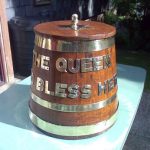
A sailor’s ration of alcohol was originally beer. At that time, a daily ration of one gallon was given. This official allowance continued until after the Napoleonic Wars. When beer was not available, as often happened due to spoilage, it could be substituted by a pint of wine or half a pint of spirits depending on what was locally available. Later, the political influence of the West Indian planters led to rum being given the preference other spirits. The half pint of spirits was originally issued neat, or without water. It is said that sailors would “prove” its strength by checking that gunpowder doused with rum would still burn (thus verifying that rum was at least 57% ABV). I guess they didn’t trust the bar tender. “The practice of compulsorily diluting rum in the proportion of half a pint to one quart of water (1:4) was first introduced in the 1740s by Admiral Edward Vernon (known as Old Grog, because of his habitual grogram cloak). The ration was also split into two servings, one between 10 am and noon and the other between 4 and 6 pm. In 1756 Navy regulations required adding small quantities of lemon or lime juice to the ration, to prevent scurvy. The rum itself was often procured from distillers in Jamaica, Trinidad and Tobago and the British Virgin Islands. Rations were cut in half in 1823 and again in half, to the traditional amount, in 1850.”
In 1850, Parliament discussed the abolition of the rum ration, then again in 1881, but nothing came of it. In 1970, Admiral Peter Hill-Norton abolished the rum ration as he felt it could have led to sailors failing a breathalyzer test and being less capable to manage complex machinery. This decision to end the rum ration was taken after the Secretary of State for Defense had taken opinions from several ranks of the Navy. Ratings were instead allowed to purchase beer, and the amount allowed was determined, according to the MP David Owen, by the amount of space available for stowing the extra beer in ships. The last rum ration was on July 31, 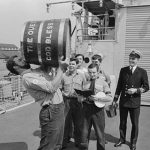 1970 and became known as Black Tot Day, because sailors were unhappy about the loss of the rum ration. There were reports that sailors threw tots into the sea and the staging of a mock funeral in a training camp. In place of the rum ration, sailors were allowed to buy three one-half imperial pint cans of beer a day and improved recreational facilities. While the rum ration was abolished, the order to “splice the mainbrace,” or awarding sailors an extra tot of rum for good service, remained as a command which could only be given by the Monarch and is still used to recognize good service. Rum rations are also given on special occasions. Examples include the 100th anniversary of the Canadian Royal Navy in 2010 and after the Queen’s Diamond Jubilee celebrations in 2012.
1970 and became known as Black Tot Day, because sailors were unhappy about the loss of the rum ration. There were reports that sailors threw tots into the sea and the staging of a mock funeral in a training camp. In place of the rum ration, sailors were allowed to buy three one-half imperial pint cans of beer a day and improved recreational facilities. While the rum ration was abolished, the order to “splice the mainbrace,” or awarding sailors an extra tot of rum for good service, remained as a command which could only be given by the Monarch and is still used to recognize good service. Rum rations are also given on special occasions. Examples include the 100th anniversary of the Canadian Royal Navy in 2010 and after the Queen’s Diamond Jubilee celebrations in 2012.
 My husband’s Aunt Pearl Hein is one of the sweetest people you could ever possibly know. I will never forget the first time I met Pearl. I was a newcomer to the family, not yet married to my husband, and so everything felt awkward, until Pearl stepped in to make me feet a lot more at ease. Of course, I was comfortable with my in-laws to be, but the other people were all unknowns to me, and that can make a shy person like me feel like crawling into a hole to hide. Then, we went to Pearl’s house, and I felt instantly comfortable. Of course, these days, I am comfortable with all of the Hein family. I have been a part of the family for over 44 years now, so I know the whole family. They are all a great bunch of people, and I enjoy spending time
My husband’s Aunt Pearl Hein is one of the sweetest people you could ever possibly know. I will never forget the first time I met Pearl. I was a newcomer to the family, not yet married to my husband, and so everything felt awkward, until Pearl stepped in to make me feet a lot more at ease. Of course, I was comfortable with my in-laws to be, but the other people were all unknowns to me, and that can make a shy person like me feel like crawling into a hole to hide. Then, we went to Pearl’s house, and I felt instantly comfortable. Of course, these days, I am comfortable with all of the Hein family. I have been a part of the family for over 44 years now, so I know the whole family. They are all a great bunch of people, and I enjoy spending time 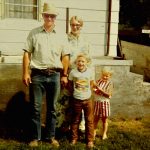 with all of them. Nevertheless, it was Pearl’s welcoming ways that opened the door to make me feel comfortable.
with all of them. Nevertheless, it was Pearl’s welcoming ways that opened the door to make me feel comfortable.
Like me, Pearl married into the family, and so she knows how it feels to be the newcomer. Still, I think that her personality is just a kind and welcoming one. She likes to make sure that everyone has anything they need, be it water, food, or good conversation. That’s what makes Pearl’s home a place that people want to visit, and a favorite place for us when we are in Forsyth, Montana, where my husband’s family is from. We used to go there every year, but haven’t gone as often in recent years, still Forsyth, the Hein family, and Schulenberg family are very dear to my heart. I 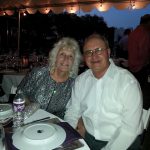 couldn’t ask for a better family to join.
couldn’t ask for a better family to join.
Pearl worked for a number of years at the IGA in Forsyth, and they considered her to be their most valuable employee. When Uncle Eddie’s health grew poor, she had to retire to take care of him. I’m sure those were scary days at the IGA, because there were things that she was the only one who knew how to do them. Knowing Pearl, like I do, I know she hated leaving them that way, but her husband was more important than any job, and he needed her. Uncle Eddie is doing much better these days, and so they have more time to relax and do the things they like to do. That makes me feel happy for them. Today is Pearl’s 70th birthday. Happy birthday Pearl!! Have a great day!! We love you!!
 Sometimes, no matter how hard the airlines work to prevent it, things go wrong. Alaskan Airlines flight 1866, which became the first fatal jet airliner crash involving Alaska Airlines, was on a routine flight from Anchorage, Alaska to Seattle, Washington. The flight was scheduled to make intermediate stops at Cordova (CDV) and Yakutat (YAK/PAYA), which it made. It was also scheduled to stop in Juneau and Sitka before ending in Seattle. Things were going along smoothly when the flight landed at Yakutat at 11:07am and then departed at 11:35am for Juneau. The flight was operated by IFR (Instrument Flight Rules). At 09:13 Flight AS1866 departed from Anchorage and landed at 09:42 in Cordova. Something was not right with the luggage upon departing Cordova, so the flight landed at Yakutat at 11:07am. Problem solved the plane took off again at 11:35am headed for Juneau.
Sometimes, no matter how hard the airlines work to prevent it, things go wrong. Alaskan Airlines flight 1866, which became the first fatal jet airliner crash involving Alaska Airlines, was on a routine flight from Anchorage, Alaska to Seattle, Washington. The flight was scheduled to make intermediate stops at Cordova (CDV) and Yakutat (YAK/PAYA), which it made. It was also scheduled to stop in Juneau and Sitka before ending in Seattle. Things were going along smoothly when the flight landed at Yakutat at 11:07am and then departed at 11:35am for Juneau. The flight was operated by IFR (Instrument Flight Rules). At 09:13 Flight AS1866 departed from Anchorage and landed at 09:42 in Cordova. Something was not right with the luggage upon departing Cordova, so the flight landed at Yakutat at 11:07am. Problem solved the plane took off again at 11:35am headed for Juneau.
What happened next, sealed the fate of all 111 people onboard the flight. The date was September 4, 1971, and it was rainy day, with low clouds. Somehow, not everyone saw the situation in the same way, but the closest accounts to reality were the ones that had the plane flying into low clouds. According to the witnesses, it then flew straight into the Chilkat Mountains in Haines Borough, near Juneau, Alaska.
The aircraft was a Boeing 727-100 with U.S. registry N2969G. It was scheduled to stop in Juneau and Sitka before ending in Seattle. The aircraft was manufactured in 1966 as c/n 19304 and manufacturer’s serial number 287. It had accumulated 11,344 flight hours prior to the incident. Seven crew members were aboard, as well as 104 passengers. The plane was told to descend and maintain 12,000 feet, and the tower asked for confirmation that the level had been maintained during a maneuver to line up for landing. He was told that the flight level had been maintained, but in reality, it couldn’t have been. At 12:00, the dispatcher repeated the permit for passing the Howard point, and also estimated the approach time as 12:10. At 12:01 Flight 1866 reported passing 12 thousand feet. At 12:07, the plane was asked about its location relative to the landing course and the waiting pattern, and the controller reported that Flight 1866 had just entered the approach scheme and followed the Howard radio beacon, after which it gave permission to descend to pass the directional beacon at a height of no more than 9 thousand feet. The crew confirmed the permission to descend and reported on leaving a height of 12 thousand feet. At 12:08, the controller asked about the altitude, with the flight responding, “…leaving five thousand five… four thousand five hundred.” Flight 1866 was then instructed to contact the Juneau ATC Tower. The crew acknowledged the transmission and then changed to the tower frequency. The tower controller said, “Alaska 66, understand, ah, I didn’t, ah, copy the intergusts to 28, the altimeter now 29.47, time is 09 112. call section, landing Runway 8, the wind 0800 at 22 occasional us by Barlow”. The crew of Flight 1866 did not respond.
“According to the testimonies of three eyewitnesses, at this time there was a little rain, and the sky was covered with clouds. According to the meteorological service of the airport, at 11:56, the sky was partly cloudy with a lower boundary of 1,500 feet and up to 3,500 feet, and up to 7,500 feet – full clouds, light rain, visibility 15 miles. Also at 1:10 pm a pilot flying from Juneau to Sitka reported weather at 11:15 – overcast, light rain, lower cloud limit 1000 feet, upper – 3000 feet, visibility 10 miles, mountain tops and passes closed. Two witnesses who were in the region of the Chilkat Mountains stated that they heard a low-flying aircraft, but 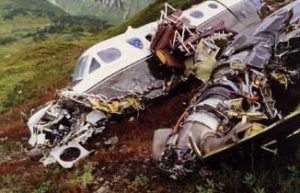 could not see it because of low visibility, which they estimated at 55-65 meters. The sound of the engines was normal. Then after a minute there was an explosion. The third witness saw a plane that disappeared into the clouds, but then did not hear any sounds. At 12:15, aircraft struck the eastern slope of a canyon in the Chilkat Range of the Tongass National Forest at the 2500-foot level, 22 miles west of Juneau. The aircraft exploded on impact.” When the crew stopped responding, at 12:23, an immediate search for Flight 1866 began. A few hours later, the wreckage of the aircraft was found on the eastern slope of the Chilkat ridge at 21.3 miles west of Juneau airport. There were no survivors.
could not see it because of low visibility, which they estimated at 55-65 meters. The sound of the engines was normal. Then after a minute there was an explosion. The third witness saw a plane that disappeared into the clouds, but then did not hear any sounds. At 12:15, aircraft struck the eastern slope of a canyon in the Chilkat Range of the Tongass National Forest at the 2500-foot level, 22 miles west of Juneau. The aircraft exploded on impact.” When the crew stopped responding, at 12:23, an immediate search for Flight 1866 began. A few hours later, the wreckage of the aircraft was found on the eastern slope of the Chilkat ridge at 21.3 miles west of Juneau airport. There were no survivors.
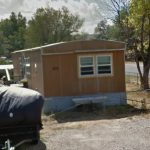
 My son-in-law, Kevin has always been a capable home renovator. He has fixed up and beautified each of the homes he and my daughter, Corrie and their family have lived it. It was a big part of what made him feel useful. Since he became disabled, I worried that he would no longer be able to do the projects he wanted to do on their home. In some ways, that has been the case. He is in pain often, and that limits the activity he can do. Nevertheless, Kevin is a very determined person. When he sets his mind to a task, he sees it through, even if it takes him much longer than it would have years ago.
My son-in-law, Kevin has always been a capable home renovator. He has fixed up and beautified each of the homes he and my daughter, Corrie and their family have lived it. It was a big part of what made him feel useful. Since he became disabled, I worried that he would no longer be able to do the projects he wanted to do on their home. In some ways, that has been the case. He is in pain often, and that limits the activity he can do. Nevertheless, Kevin is a very determined person. When he sets his mind to a task, he sees it through, even if it takes him much longer than it would have years ago.
This summer found Kevin deciding to reside their mobile home. They sold their house and paid cash for this mobile home when Corrie went back to school. They knew that with school and Kevin’s disabilities, they would 
 need to reduce the family budget, and since their sons, Chris and Josh, are now grown and living on their own, they could downsize and save money. They bought a two bedroom mobile home and paid for it in full. It was nice, but it was older.
need to reduce the family budget, and since their sons, Chris and Josh, are now grown and living on their own, they could downsize and save money. They bought a two bedroom mobile home and paid for it in full. It was nice, but it was older.
Kevin has worked on the interior, whenever his pain level allowed, and it looks very nice now. Still, the exterior was very dated and dingy looking. It was not what they wanted it to be. Corrie worked a great deal of overtime hours this summer, and it allowed them to buy new siding. They were very excited. Kevin has worked off and on putting up the siding for several weeks now, and the results have been amazing. Kevin even surprised Corrie with a cute floral “Welcome” sign for the front of the home. She had no idea he was doing that. The siding looks very professional, but that is 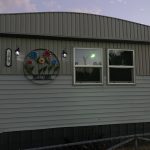
 how all of Kevin’s work looks. He doesn’t like to do a job half way or sloppy. That’s just not Kevin’s style.
how all of Kevin’s work looks. He doesn’t like to do a job half way or sloppy. That’s just not Kevin’s style.
We are all very proud of the beautiful job Kevin did on the siding. We know the sacrifices he made to get this done…and done right. We know the aches and pain he went through, and we are very proud of his accomplishment on the house. Once again, with determination, he persevered; and the work he did is just beautiful. Today is Kevin’s birthday. Happy birthday Kevin!! Have a great day!! We love you!!
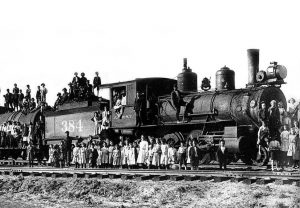 I recently read a book about the orphan trains, which ran between 1854 and 1929. During that time, approximately 250,000 orphaned, abandoned, and homeless children ride the train throughout the United States and Canada, to be placed with families who were looking for a child, or just as often, a worker for their farm. The orphan train movement was necessary, because at the time, it was estimated that 30,000 abandoned children were living in the streets in New York City. I had heard of the orphan trains, mostly from the movie called “Orphan Train,” but much of what really happened with those children was very new to me, and quite shocking.
I recently read a book about the orphan trains, which ran between 1854 and 1929. During that time, approximately 250,000 orphaned, abandoned, and homeless children ride the train throughout the United States and Canada, to be placed with families who were looking for a child, or just as often, a worker for their farm. The orphan train movement was necessary, because at the time, it was estimated that 30,000 abandoned children were living in the streets in New York City. I had heard of the orphan trains, mostly from the movie called “Orphan Train,” but much of what really happened with those children was very new to me, and quite shocking.
Today, while my husband, Bob Schulenberg and I were in the Black Hills, we rode the 1880 Train, as we almost always do when we are here. When they mentioned that the train had been 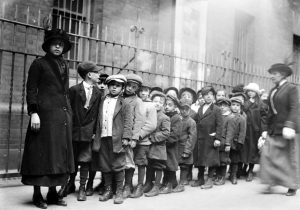 used in the movie “Orphan Train,” a fact that I had heard many times before, the stories from the book I had read came back to mind. My mind instantly meshed to train, the book, and the movie into one event.
used in the movie “Orphan Train,” a fact that I had heard many times before, the stories from the book I had read came back to mind. My mind instantly meshed to train, the book, and the movie into one event.
The children who traveled on the orphan trains were victims of circumstance, and they had no control over their lives at all. Each one hoped that their new family would be nice. The older ones didn’t have high hopes. The older boys pretty much knew that they would be farm hands. And most of them were right many were made to sleep in the barn, because they were thought to be thieves. If they were thieves, it was because they had to steal to survive. They did whatever it took to survive.
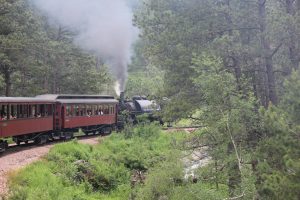 As Bob and I rode the train today, in the eye of my imagination, I could picture what it must have been like to be one of those orphans. The were sitting there watching that big steam engine take them to someplace they didn’t know, and probably didn’t want to go. They didn’t have high hopes for a great future, but then again, the past wasn’t that great either. They were forced to make the best of a bad situation, and the people who were in charge didn’t really care what happened to them. They were just doing their jobs. I have ridden the 1880 Train many times before, but today, it felt a little bit different, somehow. I knew that I wasn’t an orphan riding that train, but I certainly felt empathy for the children who were.
As Bob and I rode the train today, in the eye of my imagination, I could picture what it must have been like to be one of those orphans. The were sitting there watching that big steam engine take them to someplace they didn’t know, and probably didn’t want to go. They didn’t have high hopes for a great future, but then again, the past wasn’t that great either. They were forced to make the best of a bad situation, and the people who were in charge didn’t really care what happened to them. They were just doing their jobs. I have ridden the 1880 Train many times before, but today, it felt a little bit different, somehow. I knew that I wasn’t an orphan riding that train, but I certainly felt empathy for the children who were.
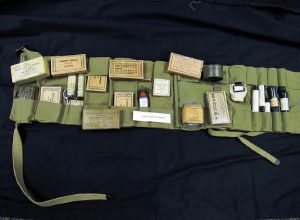 During World War II, if a man was a conscientious objector, things were…difficult. Things like that were not an automatic get out of the war card. Unless they had some necessary skill that would keep them stateside or in an office, they were signed up as a medic. Most of those men thought that was a good place for them, since the would be saving lives and not taking them, but I’m not sure who got it worse. The infantry or the medics.
During World War II, if a man was a conscientious objector, things were…difficult. Things like that were not an automatic get out of the war card. Unless they had some necessary skill that would keep them stateside or in an office, they were signed up as a medic. Most of those men thought that was a good place for them, since the would be saving lives and not taking them, but I’m not sure who got it worse. The infantry or the medics.
The men of the infantry usually considered the conscientious objectors to be cowards. That is not really the way a guy wanted to go into the army, but if they were seriously conscientious objectors, it was a calling they took seriously. 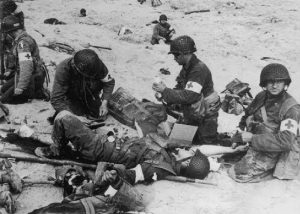 It was not, however, an easy job or the easy way out of combat. The difference between the infantrymen and the medics was that during combat, the infantrymen did their best to stay down, so the weren’t hit. The medics, on the other hand, ran into the fire to treat the wounded, and bring in the dead. It was no easy job.
It was not, however, an easy job or the easy way out of combat. The difference between the infantrymen and the medics was that during combat, the infantrymen did their best to stay down, so the weren’t hit. The medics, on the other hand, ran into the fire to treat the wounded, and bring in the dead. It was no easy job.
The medics, like most soldiers coming into the army were young men…boys really. They were often 18 or 19 years old. The infantrymen had plenty of names for them. None of them were nice…or complimentary, but the medics that stayed medics…the ones who ran into the fire to care for a wounded soldier were given new names. They were finally called medic…or more often Doc. And they were respected. They were also called hero, brave, courageous, and other respectful names. The 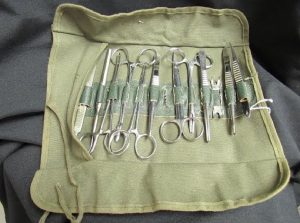 medics were not given the $10.00 per month extra that combat soldiers were given. That made the infantrymen furious. They collected money from each other to provide combat pay for their medics. The men refused to have their medics receive less.
medics were not given the $10.00 per month extra that combat soldiers were given. That made the infantrymen furious. They collected money from each other to provide combat pay for their medics. The men refused to have their medics receive less.
World War II saw eleven medics who received the Medal of Honor…as well as other medals. These men were wounded taking care of the men, and they were even killed saving the lives of the men in their care. These men were heroes, just like their counterparts in the infantry, and there isn’t an infantryman that ever fought, who would disagree.
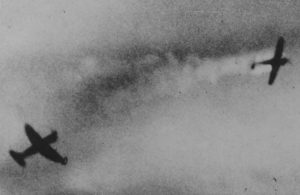 Whether it was World War I or World War II, every flyer knew what a dogfight was. Dogfights were the undisputed, most intense type of aerial combat there was. Basically it was an intense game of chicken…one that no one really wanted to play. The fight for supremacy in the skies over Europe was vital to the war effort. The Axis of Evil nations had to be stopped, and the air war was going to be the way to win the war.
Whether it was World War I or World War II, every flyer knew what a dogfight was. Dogfights were the undisputed, most intense type of aerial combat there was. Basically it was an intense game of chicken…one that no one really wanted to play. The fight for supremacy in the skies over Europe was vital to the war effort. The Axis of Evil nations had to be stopped, and the air war was going to be the way to win the war.
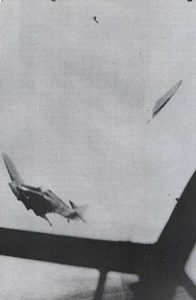
After watching some of the cockpit footage of the dogfights, I don’t know how those pilots did it. In the non-war world, two planes going head to head is not an ideal situation, but that was what the fighter planes of war have to do. As one plane starts to gain dominance over another, the plane being chased often goes into a steep climb, followed by the pursuing plane. The first plane to stall is going to end up being chased, because as he loses power, he drops and then must run first to gain power and then to get away from his attacker. If you thought going head to head with another plane was scary, imagine a deliberate stall…for supremacy!! That just seems insane to me, but that is 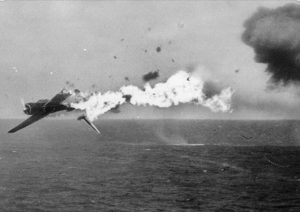 the nature of the dogfight. These pilots had to be very brave. There is no way to fly like that, or especially fight like that unless you area very brave pilot…not to mention a skilled pilot. Without that skill, the pilots would not survive long enough to even become an ace.
the nature of the dogfight. These pilots had to be very brave. There is no way to fly like that, or especially fight like that unless you area very brave pilot…not to mention a skilled pilot. Without that skill, the pilots would not survive long enough to even become an ace.
For a fighter pilot to become an ace, he had to shoot down five enemy planes. A gunner could become an ace too, but the majority of aces are fighter pilots. The key to becoming an ace, besides shooting down the enemy, is obviously to stay alive long enough to become an ace. In these dogfights, that was difficult for sure.
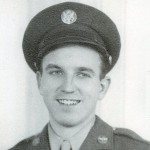
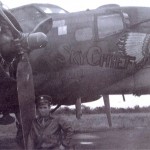 After World War II, many of the veterans were hesitant to talk about their experiences. My dad, Allen Spencer was one of those men. We were never exactly sure why he didn’t talk about it, but thought that he didn’t want to brag. I don’t really think that was it at all.
After World War II, many of the veterans were hesitant to talk about their experiences. My dad, Allen Spencer was one of those men. We were never exactly sure why he didn’t talk about it, but thought that he didn’t want to brag. I don’t really think that was it at all.
While listening to an audiobook called Citizen Soldiers, which covers the D-Day battle and the Battle of the Bulge, it hit me…even before the author said it. The reason soldiers didn’t talk much about war was a deliberate effort to forget. Unfortunately for most of her them, forgetting was impossible. Their minds were filled with haunted memories. The book mostly covers the thoughts of the infantry, but touches on the air war too.
After listening to the author’s account of the battle, I don’t think I could ever forget either, and I wasn’t there. Memories of the 19 year old farm boy away from home for the first time, and not really trained for combat. When the shooting started, he stood up to fire. Other soldiers told him to get down, by it was too late. His first battle had become his last, as an enemy bullet pierced his forehead. The soldiers who witnessed it, felt sick to 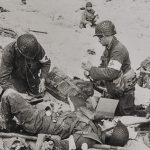
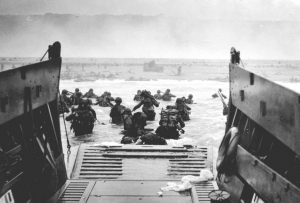 their stomachs. It was a time when a seasoned veteran was just 22 years old…and he had been made an office when his commanding officer was killed. There weren’t very many of the older men left…and by older I mean 30.
their stomachs. It was a time when a seasoned veteran was just 22 years old…and he had been made an office when his commanding officer was killed. There weren’t very many of the older men left…and by older I mean 30.
There were memories of a young prisoner of war, packed into a train to the POW camps was singing in his beautiful tenor voice, all the Christmas music he could think of to help raise moral. It was working, but suddenly the trains were under attack. The prisoners couldn’t get out, and the guards had run away. Finally a skinny boy was able to get out through a tiny window. He opened the door to his car and the men moved to free the other prisoners. There was really nowhere to go, but they escaped the attack. Then, the guards came back and loaded them back on the train. When someone asked the tenor to sing some more, they were told that he hadn’t made it back. His sweet voice was forever silenced. The men on the train were silent too…sick at heart.
The fighters in the plane’s overhead knew that it was kill or be killed, but whenever a plane went down, enemy 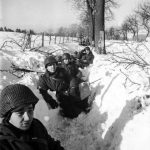
 or one of theirs, they counted the parachutes, hoping the men got out alive. For them non the planes dropping bombs, they knew that someone below went to work that day, having no idea tat they would not be returning home again. They had been simple factory workers, just doing what they were told. And what of the missed targets that landed bombs on schools and other civilian locations. The men in the planes above had to live with that. They had done their duty, but it certainly didn’t feel good.
or one of theirs, they counted the parachutes, hoping the men got out alive. For them non the planes dropping bombs, they knew that someone below went to work that day, having no idea tat they would not be returning home again. They had been simple factory workers, just doing what they were told. And what of the missed targets that landed bombs on schools and other civilian locations. The men in the planes above had to live with that. They had done their duty, but it certainly didn’t feel good.
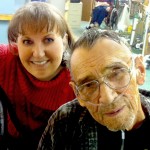
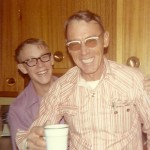 As another of my father-in-law, Walt Schulenberg’s birthday has arrived, I find myself unable to believe that he has been in Heaven for over six years now. Today, he would have been 90 years old. Somehow, I can’t imagine that he could have been that old…mostly, I suppose, because he never really acted like an old man. He always seemed young and full of life. He was busy and always working on some project. I know he slowed down some in the last year or so of his life, but it still didn’t strike me that he was growing older. Maybe because I saw him just about every day in those last few years. You somehow don’t see what is right in front of you when you are there every day. He always seemed the same vibrant workaholic that I had know all the years that he was my father-in-law.
As another of my father-in-law, Walt Schulenberg’s birthday has arrived, I find myself unable to believe that he has been in Heaven for over six years now. Today, he would have been 90 years old. Somehow, I can’t imagine that he could have been that old…mostly, I suppose, because he never really acted like an old man. He always seemed young and full of life. He was busy and always working on some project. I know he slowed down some in the last year or so of his life, but it still didn’t strike me that he was growing older. Maybe because I saw him just about every day in those last few years. You somehow don’t see what is right in front of you when you are there every day. He always seemed the same vibrant workaholic that I had know all the years that he was my father-in-law.
He was a happy man, who had a great sense of humor and loved life. He cherished every grandchild and great grandchild as they came along, and I know he would have loved his great great granddaughter too. I wish they could have met. They would have gotten along splendidly. He was always a family man, and there was nothing that was more important to him than his kids and grandkids. He loved to make things for them, and was thrilled as they played with each new toy. His craftwork was in many ways, ahead of its time. He loved to tinker in the garage, and his craft barn, where he created his unique designs, and got them read to give to someone, or to sell at one of the craft fairs.
His crafts were great, but he was a great builder too. He built the family home in the country, in the late 70s, and dressed up the house they had in town, after they moved. He refurbished lawn chairs with a fresh new classic design, that made them more a showpiece than a lawn chair. And he also built puzzles for people to try their luck at. Some of them were quite difficult to solve. I think it was all a part of the kid in him and maybe 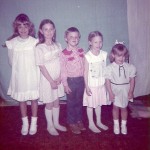
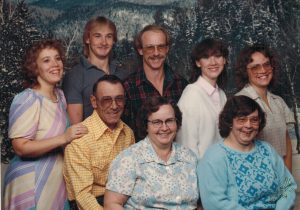 that’s why he never seemed to age. I think you have to grow up to age…don’t you? I will never forget the years that I was blessed to have Walt Schulenberg as my father-in-law. He made life fun, and he always made a person feel loved. I always knew where I stood with him…and it was a great place to be. A place of honor and respect, and yes, a place of fun and laughter too. Today would have been my father-in-law’s 90th birthday. Happy birthday in Heaven, Dad!! We love and miss you very much.
that’s why he never seemed to age. I think you have to grow up to age…don’t you? I will never forget the years that I was blessed to have Walt Schulenberg as my father-in-law. He made life fun, and he always made a person feel loved. I always knew where I stood with him…and it was a great place to be. A place of honor and respect, and yes, a place of fun and laughter too. Today would have been my father-in-law’s 90th birthday. Happy birthday in Heaven, Dad!! We love and miss you very much.

